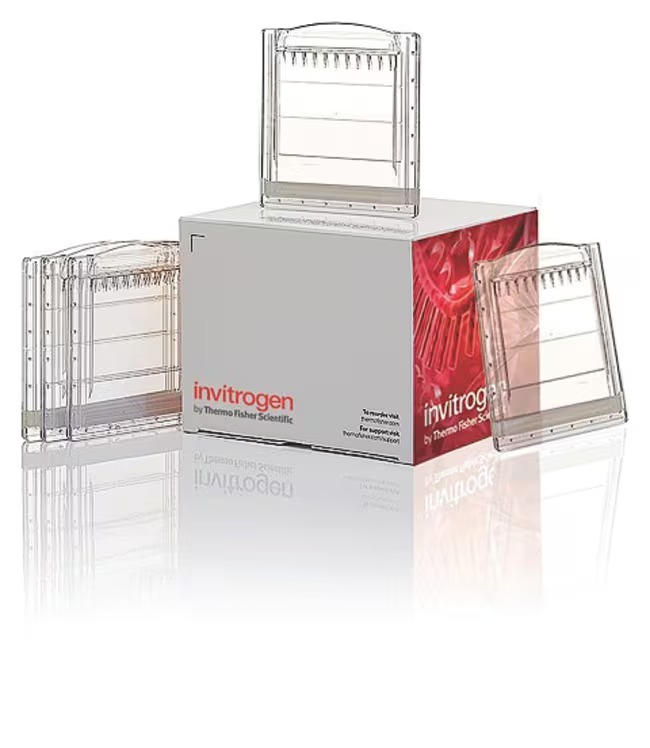Invitrogen™ NativePAGE™ Bis-Tris Mini Protein Gels, 4 to 16%, 1.0 mm
Catalog No :
CAS Number :
Brand :
In Stock
Specifications:
| Application | Gel Electrophoresis |
| Storage Temperature | Ambient |
| Product Type | Protein Gels |
| Product Brand | Thermo Fisher Scientific™ |
| Product Grade | Molecular Biology |
Invitrogen™ NativePAGE™ Bis-Tris Mini Protein Gels are high-resolution precast polyacrylamide gels designed for the electrophoretic separation of native proteins and protein complexes under non-denaturing conditions. Based on the Blue Native PAGE (BN-PAGE) technique, these gels offer superior resolution across a broad molecular weight range of 15 to 10,000 kDa.
By replacing SDS with Coomassie G-250 as a charge-shift molecule, proteins are given a uniform negative charge while retaining their native structure. The near-neutral pH environment ensures optimal protein and gel matrix stability, resulting in more reliable data and sharper band resolution than conventional Tris-glycine gels.
These gels are ideal for analyzing membrane protein complexes, enzyme activities, protein-protein interactions, and native protein conformations, especially in sensitive downstream applications like mass spectrometry or native Western blotting.
Key Features and Benefits
- 4–16% gradient gel – broad resolving range from 15–10,000 kDa
- NativePAGE™ system preserves native protein conformation and interactions
- Coomassie G-250 charge-shift maintains protein solubility without denaturation
- Near-neutral pH minimizes protein degradation and enhances resolution
- Compatible with Mini Gel Tank and XCell SureLock™ Mini-Cell
- Precast and ready-to-use with consistent performance and reproducibility
Applications
- Native protein analysis
- Membrane protein complex studies
- Enzyme activity and structural analysis
- Protein-protein interaction assays
- Molecular mass estimation of intact proteins and complexes
- Precursor to native Western blotting and mass spectrometry
Gel Use and Transfer Recommendations
- Use with NuPAGE® Transfer Buffers and PVDF membranes for optimal wet transfer
- Nitrocellulose membranes are not recommended (Coomassie G-250 binding interference)
- Compatible with Power Blotter (PB0013) and iBlot™ 2 (IB21001) for rapid dry/semi-dry transfers
Technical Specifications
| Attribute | Specification |
|---|---|
| Gel Type | NativePAGE™ Bis-Tris |
| Gel Percentage | 4–16% gradient |
| Gel Thickness | 1.0 mm |
| Wells | 10-well (BN1002BOX) or 15-well (BN1004BOX) |
| Gel Size | Mini (8 × 8 cm) |
| Separation Type | Native |
| Separation Range | 15 – 10,000 kDa |
| Sample Volume | Up to 25 μL per well |
| Compatibility | Mini Gel Tank, XCell SureLock™ Mini-Cell |
| Storage Temperature | 2°C to 8°C (do not freeze) |
| Shelf Life | 8 months |
| Shipping Conditions | Wet ice |
Invitrogen™ NativePAGE™ Bis-Tris Mini Gels provide a highly sensitive, non-denaturing gel platform for native protein separation, ideal for structural and interaction studies. With broad separation capability, sharp resolution, and easy integration with Invitrogen transfer and imaging systems, these gels are the gold standard for preserving and analyzing protein integrity in native conditions.
- Number of Wells: 10 Wells 15 Wells




 0
0
